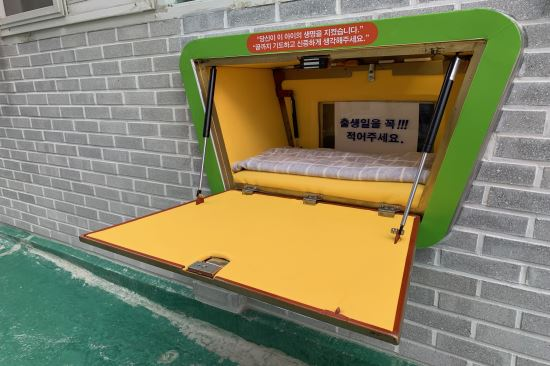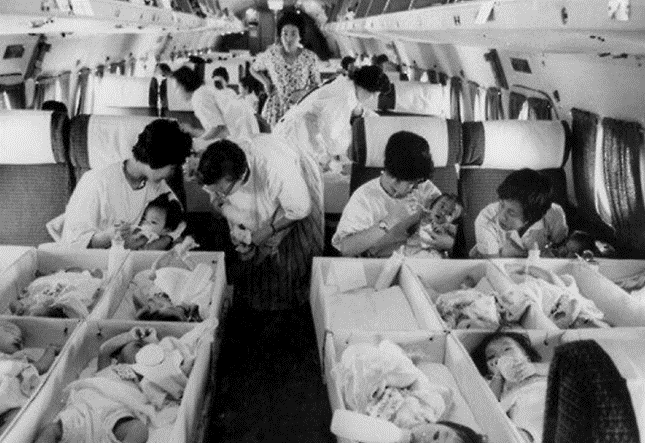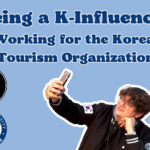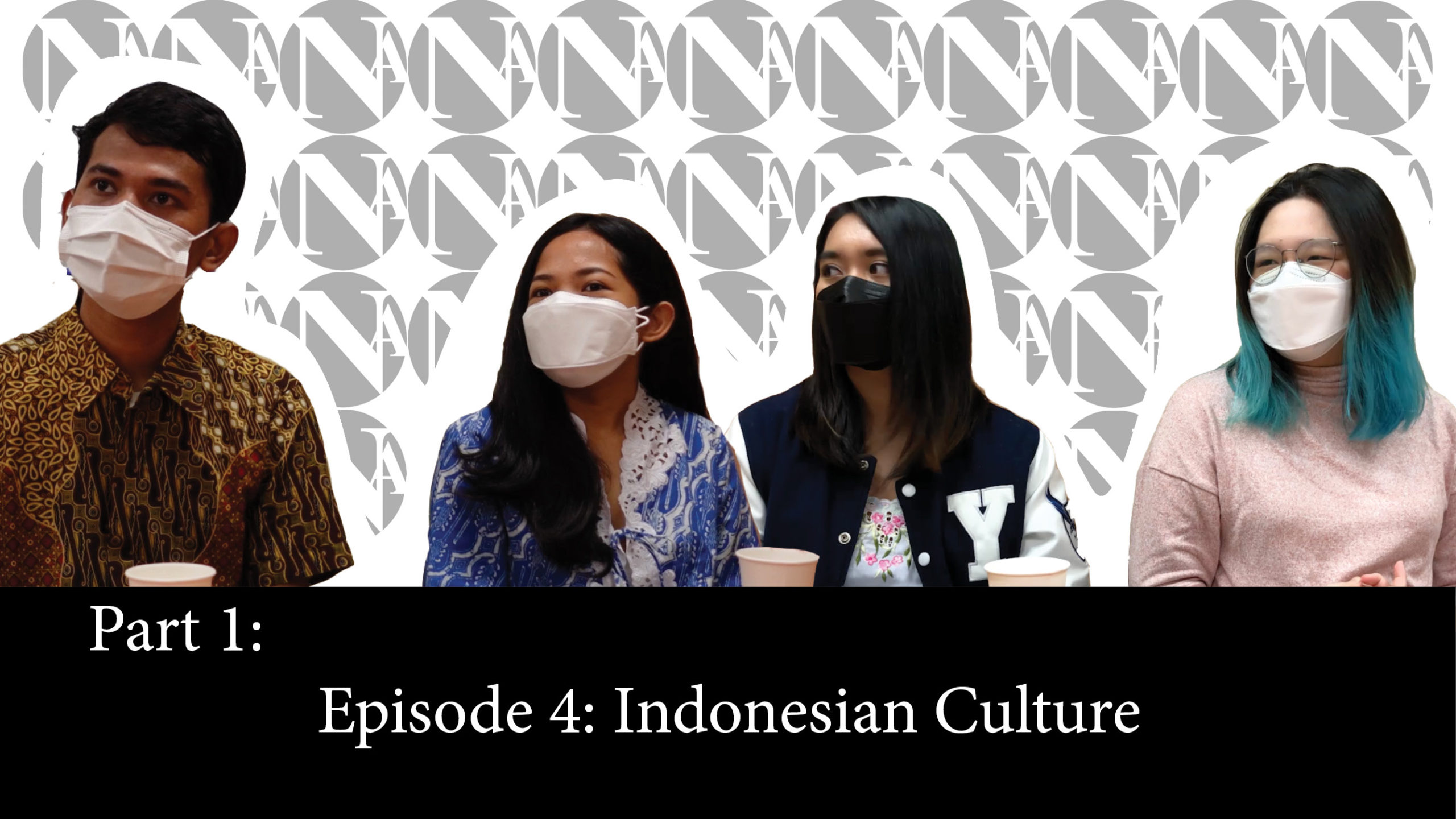Critically acclaimed and winning the Jury Award at the 2022 edition of the Cannes Film Festival, the film Broker by Hirokazu Kore-eda is a story about adoption, child trafficking, and the baby box. Studying the Japanese adoption system for his previous film, Kore-eda learned about the existence of a single baby box in Japan. It did not take long before he noticed the similarities between the Japanese and Korean adoption industry, and the apparent larger public support for the baby box in Korea. The baby box is in reality not a box, but a hatch that opens up a hole in the wall where a baby can be left behind. With the instalment of the first one in Korea in 2009, pastor Lee of the Jusarang Community Church has been advocating for the establishment of more baby boxes throughout Korea “to save just one more life.”
Support for the baby box came mostly from the Jusarang Community and adoptive parents who see the baby box as an effective measure against infanticide; “where else can mothers who cannot raise their newborn child go?” is often the question asked. On the surface, the baby box then seems a good initiative that saves babies; something that is desperately needed in a country with the lowest birth rate in recorded history. To understand both sides, we need to take a look at child registration, the adoption system and what it means to be a mother in Korea.
The baby box

The Baby Box at the Jusarang Community Church in Seoul. Source: KookminIlbo.
Currently, there are two hatches in operation, one in Seoul and one in Gunpo; both are illegal. As Article 7 of the UN Convention on the Rights of the Child states that “a child must be registered as soon as he or she is born”, enabling people to abandon their child directly violates the rights of the child. The problem here is that children left behind in a baby box are not birth registered; this is simultaneously one of the primary motivations to leave a child behind in a baby box. The UN Committee on the Rights of the Child has for this reason called for a complete ban on the baby box since 2011.
The Jusarang Community has been trying to install more baby boxes in other areas by amending local legislation. Just last year, several public hearings were held in Jeju by invitation of local MP Song Chang-kwon (Democratic Party). Supported by the Jusarang Community Church, MP Song published plans for the enactment of several by-laws that would allow the installation of a baby box in Jeju island. MP Song seems to have mostly abandoned the course of action by the persuasion of his fellow MPs, after loud protests from the regional operators of facilities for unwed mothers and vulnerable children. They argued against the installation by showing how there was no place for the box within the current system and how it would operate on the thinnest margins of legality. To understand their protest, the broader system they are protesting against needs to be understood.
The Korean Adoption System
Korea has a long history of adoption, both domestic and intercountry. It is an understatement that Korea is the birthplace of the modern intercountry adoption system. However, from a legal point of view, adoption has always been an uncomfortable issue. Adoption is currently regulated through the Special Adoption Law, making it a legal island that remains separated from the broader civil law. This has historically been the cause of many wrongdoings with falsified documents and illegal adoptions being a major issue. This law was amended in 2011 to safeguard the right to information of the adoptees about their adoption and to prevent illegal adoptions by strengthening the requirements for consent. This meant that from then on, both biological parents had to give a written consent. On top of that came a mandatory seven-day grace period after the birth of the child before adoption could be decided.
For the prospective parents, adopting a child has become more difficult due to this reinforcement of the rights of the child. Before the amendment, mothers could simply give the child up to an adoption agency immediately after birth without any registration. Though there is an obligation to register a new-born child within a month after birth, adoption was the solution for those in the blind spots of the welfare system: single unwed mothers, victims of abuse, illegal immigrants, and minors, those who did not want to have a child registered under their name. The child was made an orphan and this allowed adoptive parents to easily adopt and register the child as their own. Now that this has been made more difficult, the baby box has presented itself as an alternative; not only for the mothers who want to remain anonymous but also for prospective adoptive parents. Still, both in the case of adoption and the baby box, the primary question that emerges is why there seems to be an urgent need for both in South Korea.
Disputed Motherhood
There has historically always been a need for a system to give up children anonymously. The patriarchal family registration system that emerged from the patrilineal tradition of the late-Joseon dynasty was only abandoned in the 1990s after a landmark ruling of the Constitutional Court; unwed mothers have been able to register their own children only since 2008. Being a mother is simply not only about biology; it is a socially constructed identity that needs to be recognised and constantly reaffirmed by the imagined community. Motherhood is thereby made dependent on external factors such as the socio-economic position of both parents and the legality of the relationship between the parents. The constructed stigma surrounding the birth of a child that flows out from this has been a cause for infanticide and abandonment throughout all societies, South Korea is thereby no exemption.

Children are being cared for in the airplane before going on their way to their new parents overseas. Source: National Archive of Korea.
What is different is the emergence of a comprehensive cross-border system of adoption: South Korea alone has supplied 40% of the world’s intercountry adoptions. The story may seem straightforward: patriarchal society causes stigma against single mothers, leading to child abandonment. Adoption is the saviour of these children! But the adoption system evolved organically, in line with shifts in demography and government policy; it was not only a possible solution to an already existing problem, it was an active agent in shaping the definition of motherhood in Korean society. This in turn directly influenced their ‘supply’ of children.
This is one of the primary reasons why an increasing number of Korean adoptees are actively raising their voices against the efforts of the Jusarang Community. They see the baby box as another longarm of the adoption system, arguing that it is a way for society to ignore the root cause of child abandonment and instead make it easier for mothers to deny their motherhood voluntarily; that adoption agencies have garnered enormous wealth through the adoption of children to wealthy families with a child-wish is only mentioned as a secondary argument.
South Korea’s childless future(?)
In the end, the position that the child’s life should be protected through the baby box and those arguing that the baby box induces child abandonment are opinions that come from the same concern: the child’s basic human rights. The pro-baby box group argues that the child’s life is primordial, the opponents argue that protecting a child without protecting its right is futile. However, what is overlooked here is the tackling of the primary cause that triggers the debate in the first place: the issues surrounding motherhood in Korean society. This is an uncomfortable position that is directly connected to the low birth rate and the increasingly conservative feminist movement in Korea.
All over the globe, Korean society and culture are increasingly mediated through various forms of entertainment on screens of various sizes. Korean cinema is also finding its way to a more diverse audience and also producers, thereby bringing to light perspectives that are easily overlooked by those who live inside it. Inspired by his passion to portray social outcasts, Kore-eda in Broker uses the baby box as an unconventional storytelling device to tell a story about unconventional families but thereby indirectly lays bare the difficult position of motherhood in South Korea. To overcome the need for a baby box, a device invented in medieval Europe, South Korean society should not scrutinise the reasons for child abandonment alone. Instead, it has to answer a broader question: why does no woman want to be a mother in general? A deeper understanding of motherhood by society and state is needed to envision the comprehensive socio-economic reforms needed to boost the faltering birth rate and create an environment where no mother feels the need to abandon a child.






